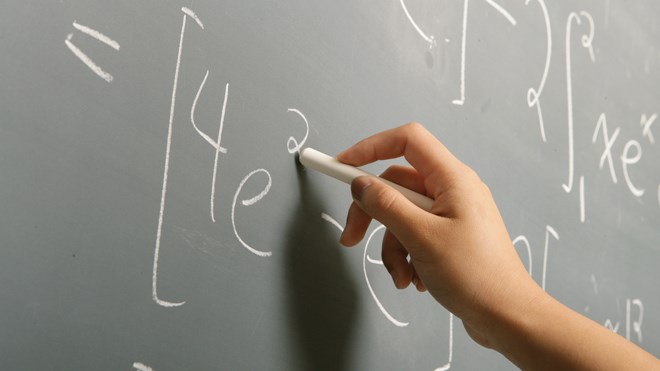Standardized test scores in literacy and math scores for Grade 3, 6 and 9 students were released Sept. 19, showing the troubling trend of declining math scores in elementary schools is continuing.
They show math scores at local school boards largely follow the provincial trend of stable scores at the secondary school level, but a steady downward slide at the elementary school level.
"Math and literacy are the foundation for the knowledge and skills that students will use in their careers and in society and EQAO’s assessments in these areas helped to identify several trends,” said EQAO chair Dave Cooke, in a press release.
“In particular, the continued decline in elementary-level math scores suggests that Ontario’s Renewed Math Strategy is not having the intended impact.
“Parents, educators and policy-makers across Ontario will be looking at EQAO data, alongside other information, to understand what changes need to be made to support our students and foster accountability in our publicly funded education system."
Just 34 per cent of Sudbury Catholic District School Board Grade 6 students passed the EQAO math assessment in 2017-2018, down from a 45-per-cent pass rate three years earlier, in 2014-2015.
At a provincial level, 49 per cent of English-language Grade 6 students passed the EQAO assessment in 2017-2018, down from 54 per cent in 2013-2014.
These stats and many more are available on the Education Quality and Accountability Office (EQAO) website.
Here's our breakdown of local EQAO math results:
Grade 3
Provincially, 61 per cent of Grade 3 English-language students passed the EQAO math test in the last school year. That's down from 67 per cent in 2013-2014.
The Sudbury Catholic District School Board had the worst results locally when it came to Grade 3 math scores.
Forty-six per cent of Grade 3 students passed the test in 2017-2018. That's the same score as the previous two years, but down from 56 per cent in 2013-2014.
Just above half of Rainbow District School Board Grade 3 students — 53 per cent — passed the math assessment. That's down from the board's 2013-2014 result of 61 per cent.
The pass rate for Grade 3 math is higher with the local French boards, although officials are quick to point out Francophone and Anglophone students do not take the same test, so the results are not comparable.
Seventy-seven per cent of Grade 3 Conseil scolaire catholique du Nouvel-Ontario (CSCNO) students passed the math assessment, a similar score to past years, as well as the provincial average for francophone students (75 per cent).
Grade 3 math scores are slipping among Conseil scolaire public du Grand Nord de l'Ontario students, where 65 per cent passed the math exam in 2017-18, down nine percentage points from 2013-14, when 74 per cent passed.
Grade 6
At a provincial level, 49 per cent of English-language Grade 6 students passed the EQAO assessment in 2017-2018, down from 54 per cent in 2013-2014.
Just 34 per cent of Sudbury Catholic District School Board Grade 6 students passed the EQAO math assessment in 2017-2018. That's down from 45 per cent in 2014-2015.
Test results are slightly better with Grade 6 students at the Rainbow District School Board, where 41 per cent of students passed the EQAO math assessment this past school year.
That's down one percentage point over the previous year, and eight points from the 49 per cent of students who passed in 2013-2014.
The Grade 6 math exam pass rate is once again higher among the local French boards.
Eighty-one per cent of CSCNO students passed the exam in 2017-2018, down from an 84 per cent pass rate in 2013-2014.
At CSPGNO, 78 per cent passed this past school year, down from a 85 per cent pass rate in 2013-2014.
The provincial pass rate among francophone students for Grade 6 math in the 2017-2018 school year is 83 per cent.
Grade 9
At the Grade 9 level, 45 per cent of English-language applied mathematics students passed the EQAO exam across Ontario in 2017-2018. That number increases to 84 per cent in the academic stream.
In 2013-2014, the provincial numbers were 47 per cent and 85 per cent, respectively.
Among Sudbury Catholic students, 62 per cent of applied-level students passed the exam last year, and 84 per cent of academic students. The board posted scores of 58 per cent and 81 per cent, respectively, in 2013-2014.
At the Rainbow board, 39 per cent of applied mathematics students passed the math exam in the past school year — a much smaller percentage than their peers at Sudbury Catholic.
Eighty-one per cent of Grade 9 Rainbow board academic mathematics students passed the EQAO math assessment in 2017-2018. That's up a few points from 78 per cent in 2013-2014.
With CSCNO students, 45 per cent of applied Grade 9 mathematics students passed the EQAO assessment this past school year. That's up from 41 per cent in 2013-2014.
Among academic mathematics students, 79 per cent passed the exam this past school year. That's a big improvement from the 72 per cent pass rate the board posted in 2013-2014.
At CSPGNO schools, just 27 per cent of applied Grade 9 mathematics students passed the EQAO assessment in 2017-2018. That's down from 33 per cent in 2013-2014.
The pass rate for CSPGNO academic Grade 9 mathematics students has actually gone up from 63 per cent in 2013-2014 to 77 per cent in 2017-2018.
In comparison, the provincial pass rate for francophone students on the EQAO Grade 9 math assessment is 51 per cent for applied students and 88 per cent for academic students.
If you'd like to check out the EQAO results for your child's school or school board, visit eqao.com.
If you're curious who is seeking election in the trustee races, visit Sudbury.com's trustee election page here.
